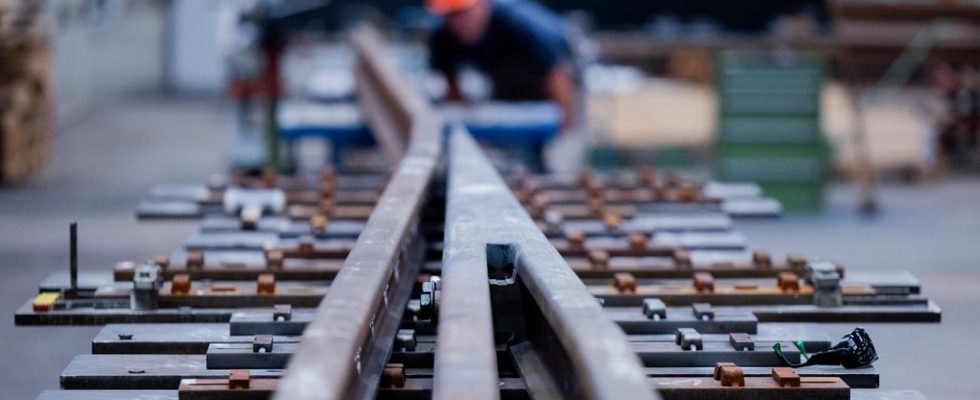According to the network status report, Deutsche Bahn’s rail network has continued to deteriorate. More than half of the routes need to be repaired. This causes delays.
Deutsche Bahn’s rail network has also become worse in 2022. This comes from that Network health report published by the railway company InfraGo (formerly DB Netz). The company gives its own infrastructure a grade of 3.01. The year before the grade was 2.93. Data for the past year is not yet available.
According to the report, more than half of the routes examined were in mediocre, poor or inadequate condition in 2022 and were therefore at least in need of repair. Many train delays were due to poor infrastructure. Routes with the highest utilization, which are important for stability and punctuality across the entire network, were particularly vulnerable.
Particularly heavily used routes are in poor condition
“The condition of the rail infrastructure has deteriorated in recent years because there were not enough funds available to renew enough systems,” writes InfraGo boss Philipp Nagl. The highly utilized part covers around 3,500 kilometers of route. That corresponds to around ten percent of the total route network. This area was only rated 3.15.
In this part of the network, tracks and switches in particular are in poorer condition. More than a quarter of the tracks will have to be replaced in the medium term. However, all infrastructure facilities are safe for traffic. In order to be able to comply with the standards that already apply, action must be taken immediately on systems that are relevant to punctuality, the railway says.
Large differences between individual regions
In a regional comparison, the northern area performs worst with a network condition score of 3.2. The below-average rating is mainly due to the Kiel network with a grade of 3.52. None of the six sub-networks in the northern region were rated better than a grade of 3.0.
The southeast region, especially Saxony, performed best with a grade of 2.6. The railway particularly emphasizes the very good condition of the upgraded line between Leipzig and Ebensfelde, which was rated 1.76. The section was extensively renovated from 2015 to 2019.
Deutsche Bahn judges its own network harshly
Of the various types of systems in the entire network, the conditions of signal boxes (3.75) and level crossings (3.62) were rated the worst. The best grades were for tunnels (2.03) and supporting structures (2.10). The railway makes a harsh judgment in the report: “The infrastructure cannot keep up with the rapid growth in traffic.” The rail network is too old, too prone to failure and has too little capacity, which is further limited by many construction sites.
New strategy: Entire corridors are closed
The railway wants to tackle the problems in the coming years with the general renovation of dozens of heavily used routes. According to the plans, 40 busy railway lines are to be completely closed for around five months by 2030 and then completely renovated.
It starts in July on the Riedbahn between Frankfurt and Mannheim. According to the Federal Ministry of Transport, every seventh long-distance train in Germany has to go through this corridor. The following year it was the turn of the Berlin-Hamburg and Emmerich-Oberhausen routes.
Construction industry has doubts about the railway’s plan
The construction industry has doubts as to whether this project can be implemented as planned. “Implementing an order volume of 600 million euros in five months is hardly or not at all feasible,” construction industry president Peter Hübner told the “Frankfurter Allgemeine Zeitung”. The idea of closing entire corridors is fundamentally a good one.

